Chapter 12: Acquired Neurogenic Language Disorders
Causes of Acquired BI
Cerebrovascular Accident (CVA) - stroke
Embolus - a moving clot from another part of the body that lodges in the artery
Thrombosis - when an artery has gradually filled in with plaque
Both types result in the closing of an artery to the brain which lead to the deprivation of oxygen (anoxia)
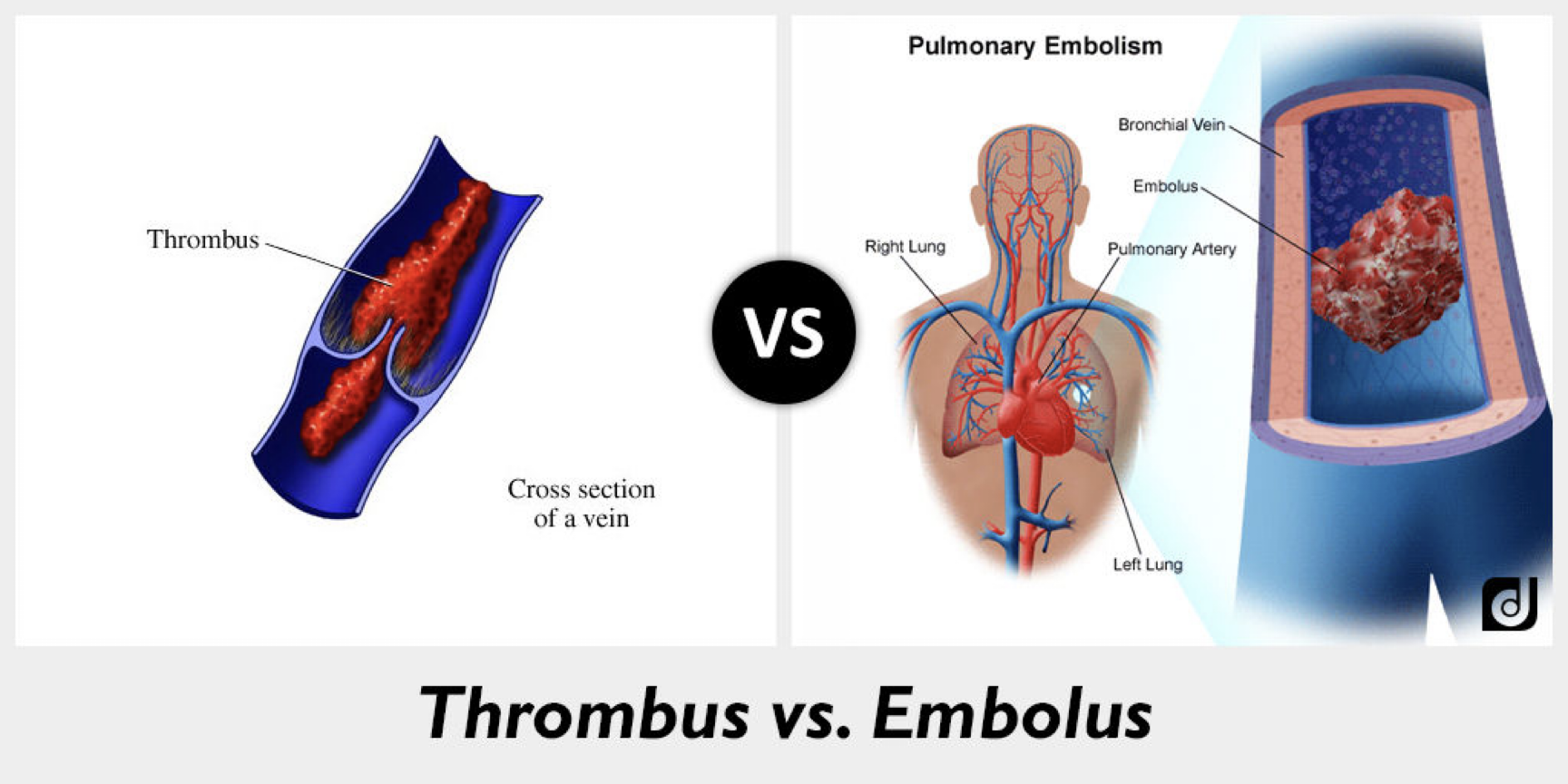
Transient Ischemic Attack (TIA) - a temporary closing of the artery with symptoms that disappear within 24 hours (may precede a stroke); may be a smaller stroke
Hemorrhages - another type of stroke, bleeding in the brain
Aneurysm - weakening of an artery that bulges and eventually breaks, interrupting blood flow to tissues fed by that artery
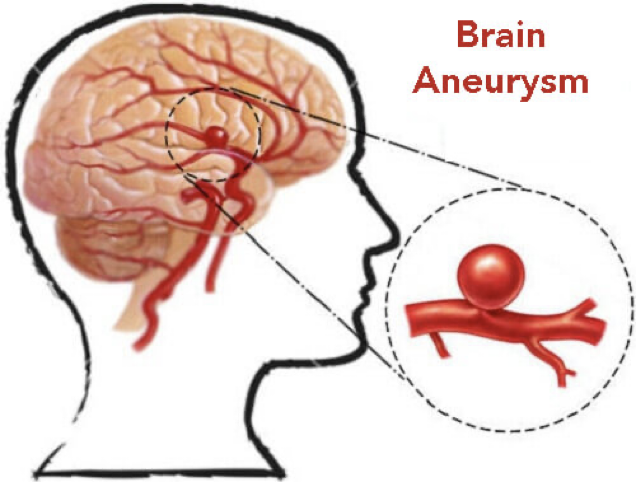
Effects of a stroke are immediate
Result of edema (swelling of brain tissue)
Spontaneous recovery - recovery of function associated with a reduction in edema
Recovery is better if the brain damage is small and the stroke occurs at a young age
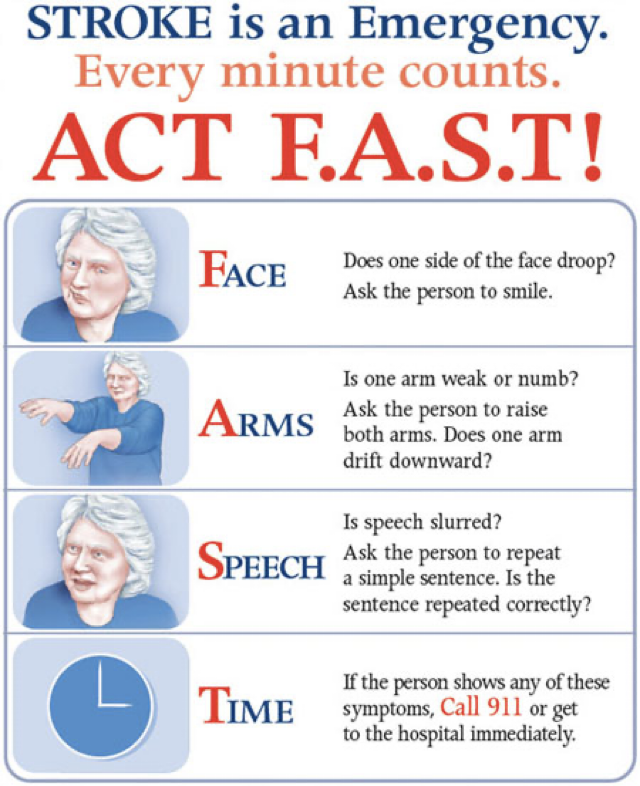
Causes of Traumatic BI
Open/closed brain injury
Open brain injury - skull is opened; ex. gunshot wound
Closed brain injury - brain movement; ex. whiplash
Contusions - bruises on the surface of the brain
Lacerations - tearing of structures and blood vessels
Diffuse axonal injury - damage to nerve cells in the connecting fibers of the brain
Intracerebral - damage within the brain
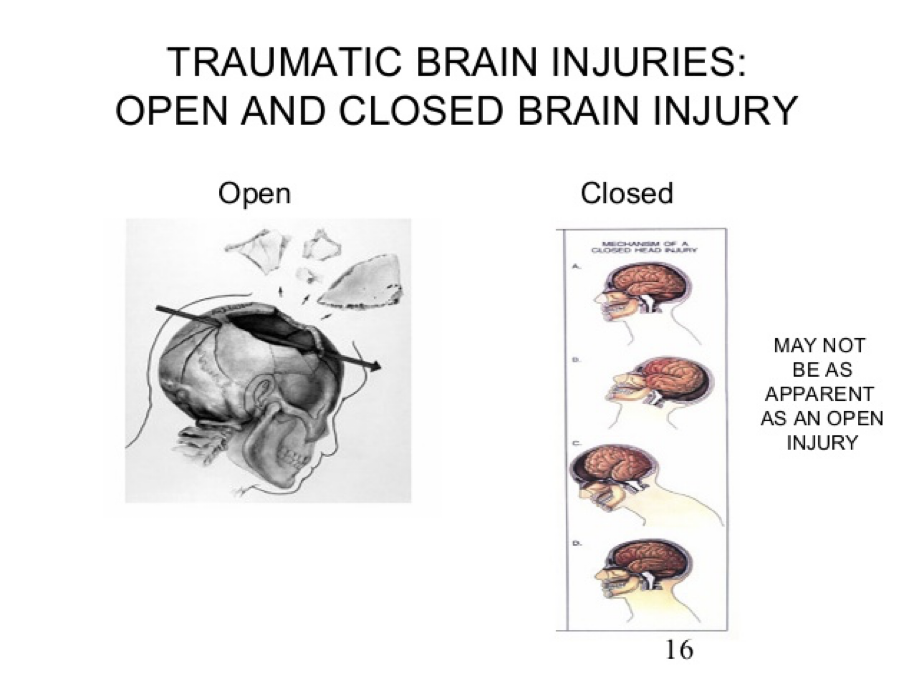
Meninges - tissue covering the brain
Hematoma - areas of encapsulated blood
Range from mild to severe depending on the force of the impact and the amount of brain tissue affected
Diffuse/localized
Greater the damage, more cognitive/language/speech/swallowing skills will be affected
Causes of BI
Neoplasms (new growths) and tumors can occur within the interior of the brain or on the surface within the tissue coverings
Can cause destruction of brain tissue and increased pressure in the brain
Tumors can be fast or slow growing
Final cause of BI is progressive deterioration of brain functions, gradual loss of brain cells resulting in brain atrophy
Alzheimer’s dementia makes up 70% of the cases of dementia
Degeneration of neurons
Accumulation of amyloid plaques
Tangles (twisted stands of proteins)
Aphasia
Aphasia is a language disorder caused by left hemisphere damage, typically resulting from a stroke
Auditory comprehension
Verbal expression
Reading
Writing
Classifications of Aphasia
Clinicians use the patterns of strengths and weaknesses in the areas of communication to classify the type of aphasia
Evaluate the following skills:
Naming
Fluency
Auditory Comprehension
Repetition
Sentence Formation and Production
Naming
Naming - is the process of knowing and retrieving the label for an object
Parts of naming: “BOOK”
Access the conceptual store that identifies the item as something with a cover, lots of pages, and that you read
Identify a semantic label (vocabulary word) that best fits the concept that you established, “book”
Develop a phonological form for the label /b/ /oo/ /k/
Naming Errors:
Individual may have no awareness that it is not meaningful to the listener
Neologisms - are new words “gabot” for “table”
Semantic paraphasia - lion for tiger
Phonemic paraphasia - gable for cable
Circumlocutions - describe the characteristics of the item, how it is used, and in what circumstances, but cannot name it
Failure to name does not provide information on why the task cannot be carried out
Naming deficits are a universally expected feature of aphasia regardless of lesion site
Fluency
Fluent aphasia: patients present with an overall ease of speaking, normal length and rate, and adequate melody (posterior brain lesions -- Wernicke’s Area)
fluent aphasia Wernicke’s aphasia tactus
Nonfluent aphasia: is characterized by effort, a slow rate, and abnormal pauses (anterior brain lesions -- Broca’s Area)
Broca’s aphasia nonfluent aphasia tactus
Auditory Comprehension
Is the ability to understand spoken language
Includes:
Segmenting the sounds heard into meaningful phonemes
Understanding the meaning of the words within the sentence
Retaining the message in memory long enough to understand it and form a response
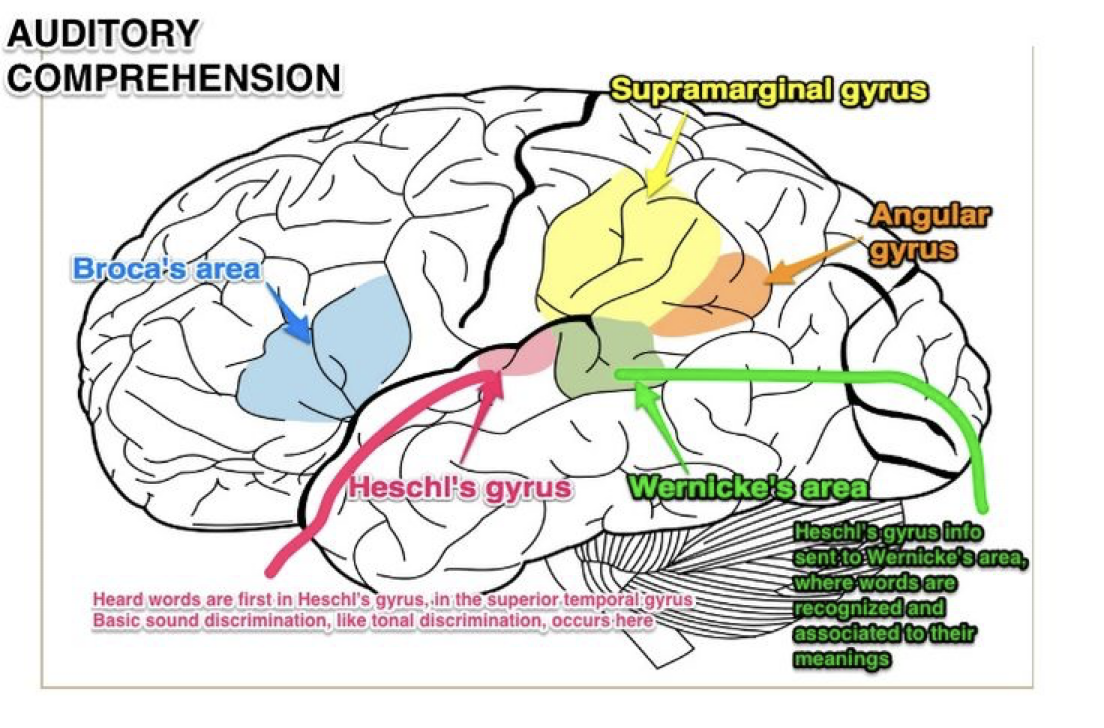
Clinicians assess auditory comprehension by asking questions, making statements, or giving commands to which the individual must respond
“Point to the door”
“Does a stone float?”
Repetition
Repetition of words and phrases assesses the integrity of connecting pathways (Arcuate fasciculus) between Wernicke’s area and Broca’s area
Asked to repeat:
Hear the phrase (Wernicke’s area)
Organize the output for repetition (Broca’s area)
Arcuate fasciculus has damage an individual will have marked difficulty repeating words, but minimal difficulty with auditory comprehension, or fluency
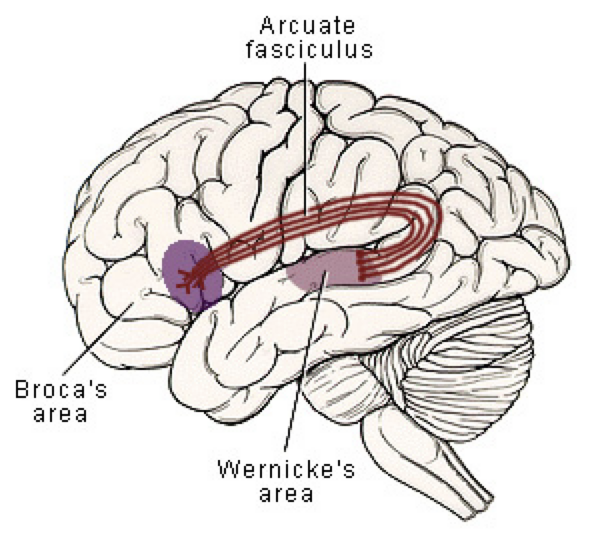
Sentence Formulation and Production
Impairments in sentence production vary from omission of verbs, incorrect ordering of words, or omission of function words such as articles, prepositions, and conjunctions
These errors in sentence production are called agrammatism
Telegraphic communication - Mom. Boy. Fall. Water. Uh-oh. Floor.
Classification of Aphasia
A significant portion of the aphasic population (25%) cannot be reliably assigned to a specific category because their disorder includes patterns that are indicative of more than one type of aphasia
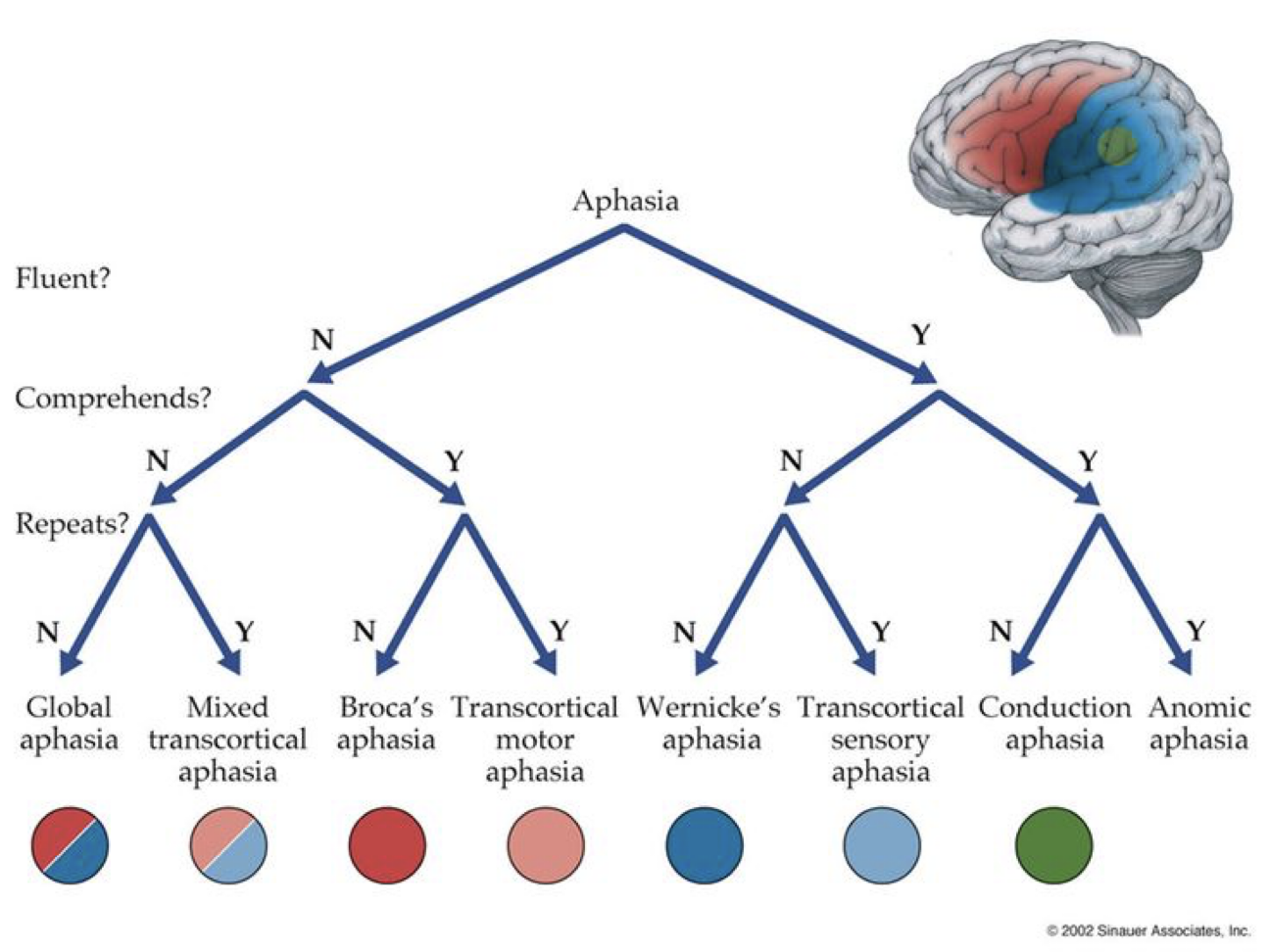
Broca’s Aphasia
Damage to Broca’s area
Nonfluent, effortful speech and agrammatism
Oral expression is slow with short sentences that contain mostly content words (subjects/verbs)
Function words are omitted (in, on, the, is)
Aware of their struggle to speak
Repeated efforts to correct their errors
Auditory comprehension is relative intact, although not entirely spared
Wernicke’s Aphasia
Damage to Wernicke’s area
Deficits in auditory comprehension
Fluent oral expression
Speech output has normal intonation and stress
Speech production is filled with verbal paraphasias (mixing up sounds in words) and neologisms (making up new words)
Speech sounds like jargon
“empty” - lots of words, no clear meaning
Show little obvious concern
Reading and writing abilities are significantly impaired
Repetition is impaired
May have automatic sentence starters “in my opinion” but struggle with content words
Conduction Aphasia
Damage to the pathways (arcuate fasciculus) that connect Broca’s area to Wernicke’s area
Decreased repetition (most cannot)
Oral expression is fluent but includes frequent paraphasias (take-cake)
Oral and written language is a relative strength
Often tries to correct their phonemic errors by saying the word repeatedly
REEL- Example Conduction Aphasia 1
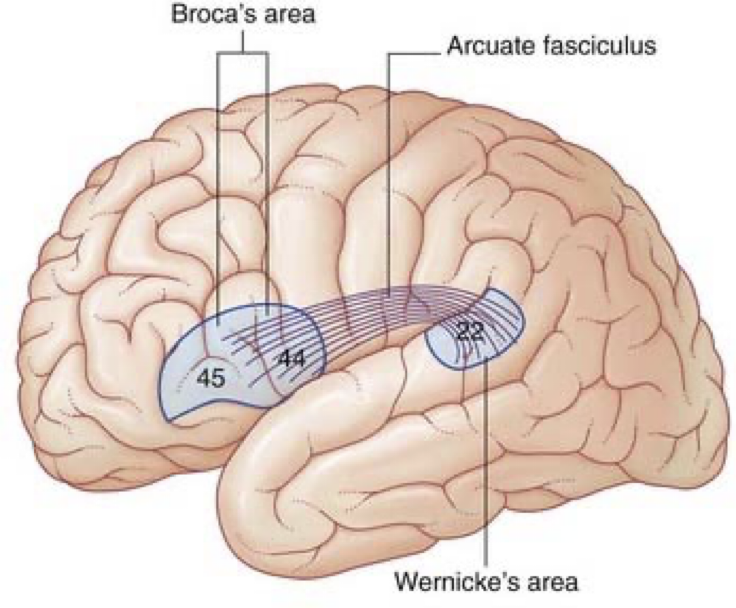
Anomic Aphasia
Anomia = “without words”
Difficulty in retrieving the names of objects, pictures, and concepts
Auditory comprehension, verbal expression, and repetition are otherwise relatively unimpaired
Marked absence of nouns in conversation
Produce paraphasias, and circumlocutions
Global Aphasia
All parts of language processing are severely impaired
Nonfluent verbal expression
Poor auditory comprehension
Difficulty repeating words
Nonmeaningful gestures
May repeat the same word/syllable over and over - Perseverative speech
Mom May 27, 2017 (global aphasia)
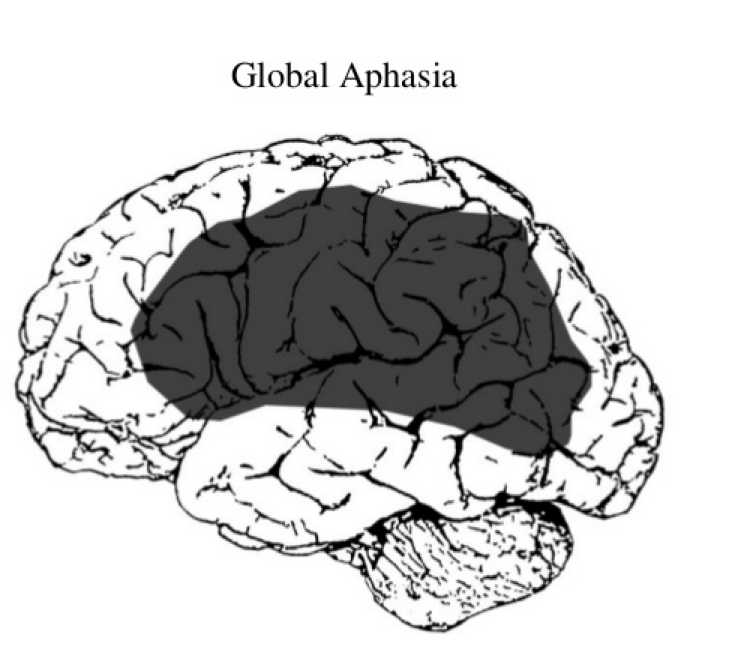
Assessment and Diagnosis of Aphasia
Recovery from brain damage
“spontaneous recovery” significant changes which occur from day to day as the nervous system recovers
Communication during spontaneous recovery is variable and affected by fatigue, medical complications, and medication
Recovery from Brain Damage
Comprehensive Aphasia Batteries
Boston Diagnostic Aphasia Examination - several hour examination for research
Porch Index of Communicative Ability (PICA) - functional communication and abilities
Western Aphasia Battery - most used in clinics
Classifies the type of aphasia; looks at content, fluency, auditory comprehension, repetition and naming, reading, writing; may do some drawing, basic math, block design, and praxis tests
Each contain batteries that assess reading, writing, auditory comprehension, naming, and other language tasks
Also assess functional communication skills or the ability to communicate meaning in familiar contexts regardless of the quality of the spoken language
Functional Communication Profile - Used to estimate the individual’s ability to communicate in everyday situations; 6-9 months post injury with communication difficulties
Communicative Abilities in Daily Living (CADL) - Used to estimate the individual’s ability to communicate in everyday situations; 6-9 months post injury with communication difficulties
Hemiplegia - Muscle weakness or paralysis on the opposite side of the body than the brain damage
Visual difficulties - may just need glasses; visual field cuts (black areas); visual neglect (will know the other side is there but do not see/perceive it)
Cognitive deficits - decreased attention and decreased memory
The Treatment of Aphasia
Initial goal is to provide the patient with a reliable communication system
This may be single words/gestures/AAC (verbally app, touch chat (learn to generate sentences), or one symbol = one sentence, etc.)
Treatment Approaches for Aphasia
2 primary goals:
Reducing language deficits
Developing compensatory strategies
Constraint Induced Language Therapy (CILT)
Focus on verbal expression (3-4 hours of treatment for several weeks) through a series of word games and activities coupled with restrictions on alternative modalities of expression
CIAT_aphasia.mov
Supported Communication for Aphasia (SCA)
Focuses on training conversational partners
Trained partners act as a ramp to access participation in daily interactions for individuals with aphasia
Group Therapy
Practicing communication skills in a nonthreatening and supportive community
Right Hemisphere Communication Deficits
Left hemisphere: form (grammar, syntax) and content (vocabulary, semantics)
Right hemisphere: use (pragmatics, social communication)
Social communication includes:
Interpret emotion
Facial expressions
Changes in intonation (prosody)
Right hemisphere seems to be involved in the ability to produce the “big picture” from the details
People with right hemisphere damage see the details but are unable to understand the broader meaning they represent
Sees the tree and kite over the man flying it and family eating under it
Difficulty understanding figurative language and humor
Thinks people are laughing at them because they do not understand the joke
Narration and discourse are marked by an overabundance of detailed information, with some not being relevant to the topic
“Talks too much”
Stories are poorly organized, inability to isolate the most important facts
Decreased topic maintenance
Deficits in turn taking
There are multiple cognitive, motor, and sensory problems following right hemisphere damage
Lack of awareness (anosognosia)
May not believe that their left leg isn’t working and try to get up then fall
Reduced insight into how deficits affect everyday life
More likely to accept and understand physical deficits over cognitive deficits
Poor navigational abilities (gets lost)
Sensory neglect: reduced responsiveness to visual, auditory, and tactile information presented from the left side
Difficulty recognizing faces
Assessment:
Attention
Memory
Spatial orientation
Emotional processing
Prosody
Inference
Discourse comprehension
Discourse - multiple sentences put together
Naming
Production
Right Hemisphere Language Battery
Brain Trauma
Neurological damage caused by injury to the brain from motor vehicle accidents (MVA), falls, blast trauma, etc.
Damage to multiple areas of the brain as well as connecting fibers within the brain
Damage is diffuse (multiple parts of the brain is effected), multiple motor, speech, language, and cognitive functions may be impaired
Majority of symptoms are related to disrupted cognitive processes
Effects of BI disrupts
Orientation - Who you are? Where are you? What time is it? Why are you here?
Attention
Memory
Processing - how quickly someone understands
Executive function - planning, initiation, etc.
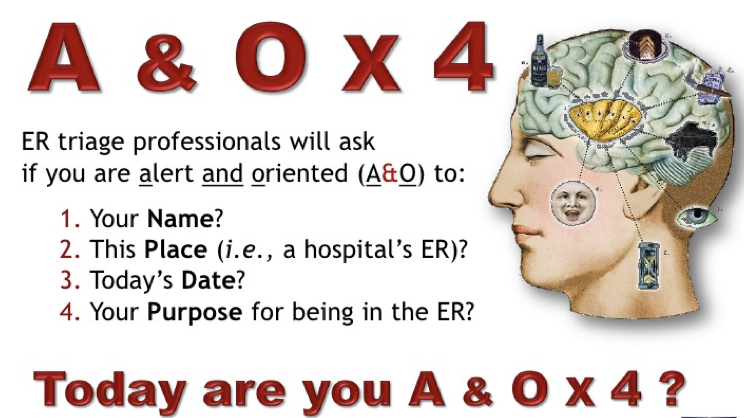
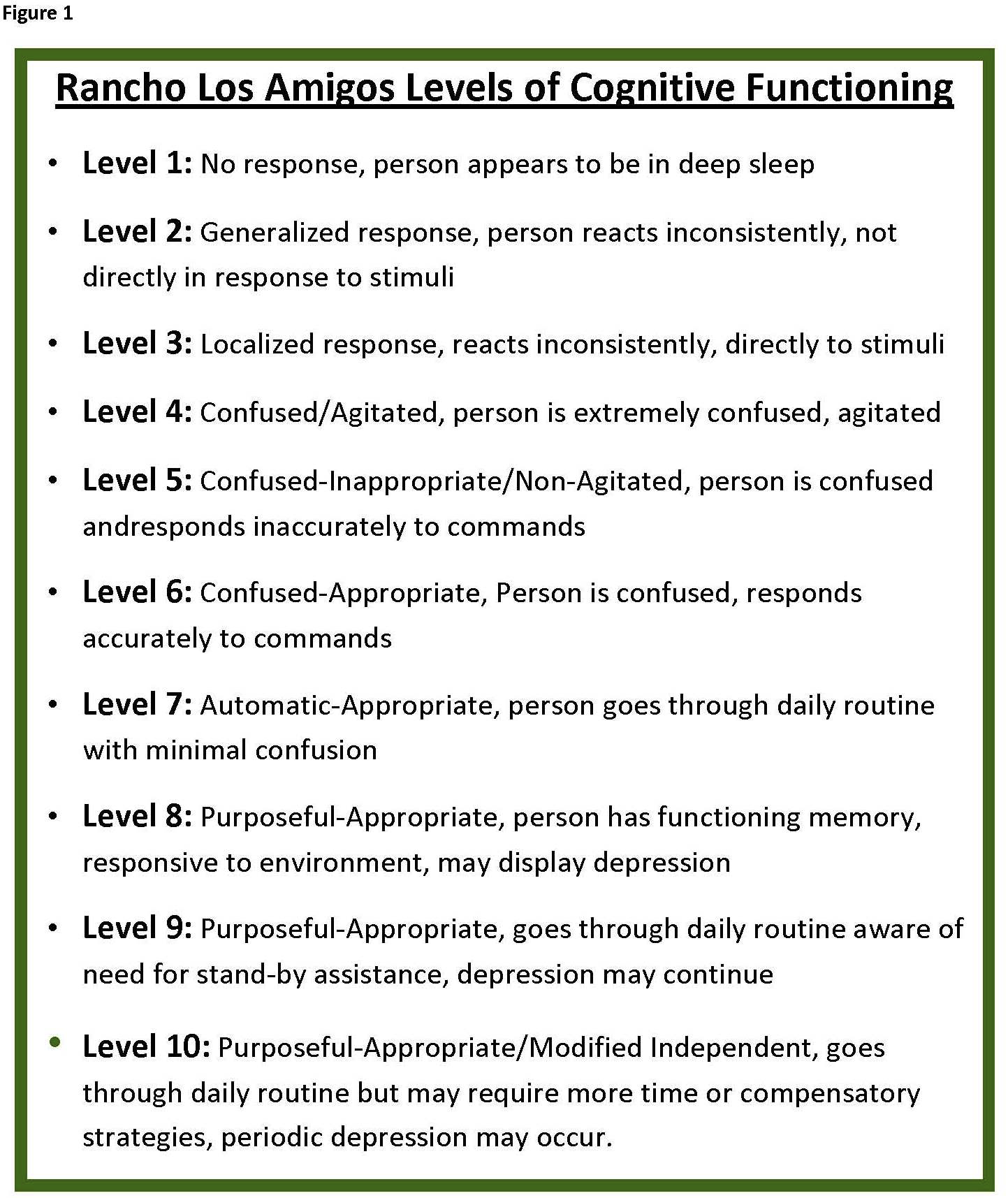
Over time, these problems resolve, but even with rehabilitation, there are often lasting deficits
Range: mild-severe
Assessment
Scales of Cognitive Abilities for TBI (SCATBI)
Assesses orientation, reasoning, organization, recall and perception
Treatment for TBI focuses on the deficits revealed from the assessment
External memory aids, problem solving strategies
Special Issues in TBI
Improvised explosive devices (IEDs) used in Iraq and Afghanistan have resulted in TBI to soldiers
Large atmospheric pressure changes from the explosive blast
Pressure waves move through body tissues
PTSD
Problems: chronic headache, emotional and behavioral changes, disorganization, deficits in memory, judgement, and attention
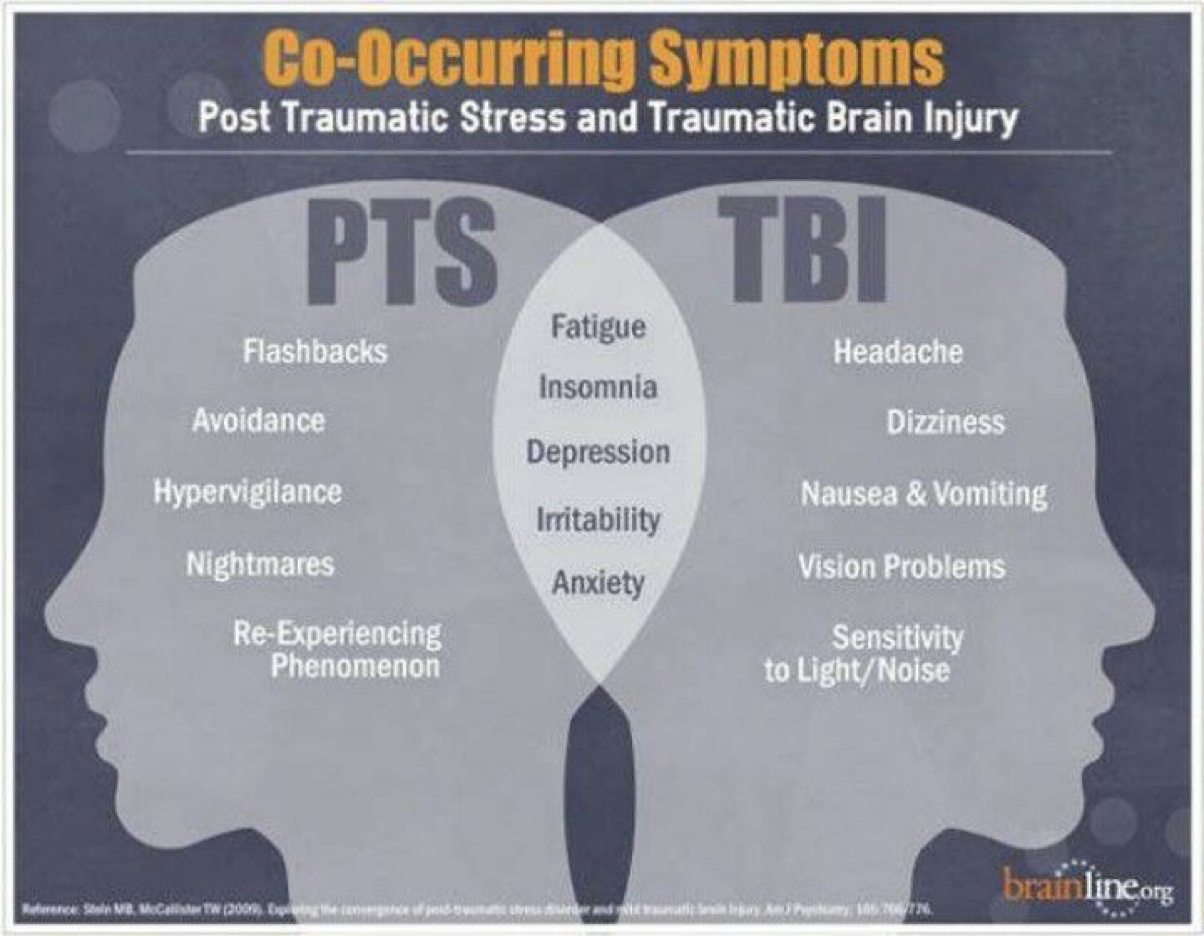
Sports Concussion
Concussion are short term periods of confusion and loss of memory following injury to the head
Symptoms resolve after a period of rest when sensory stimulation is minimized
Repeated exposure may result in progressive degenerative disease
Baseline cognitive behavior, monitor changes resulting from concussions
Advising athletes when to return to practice
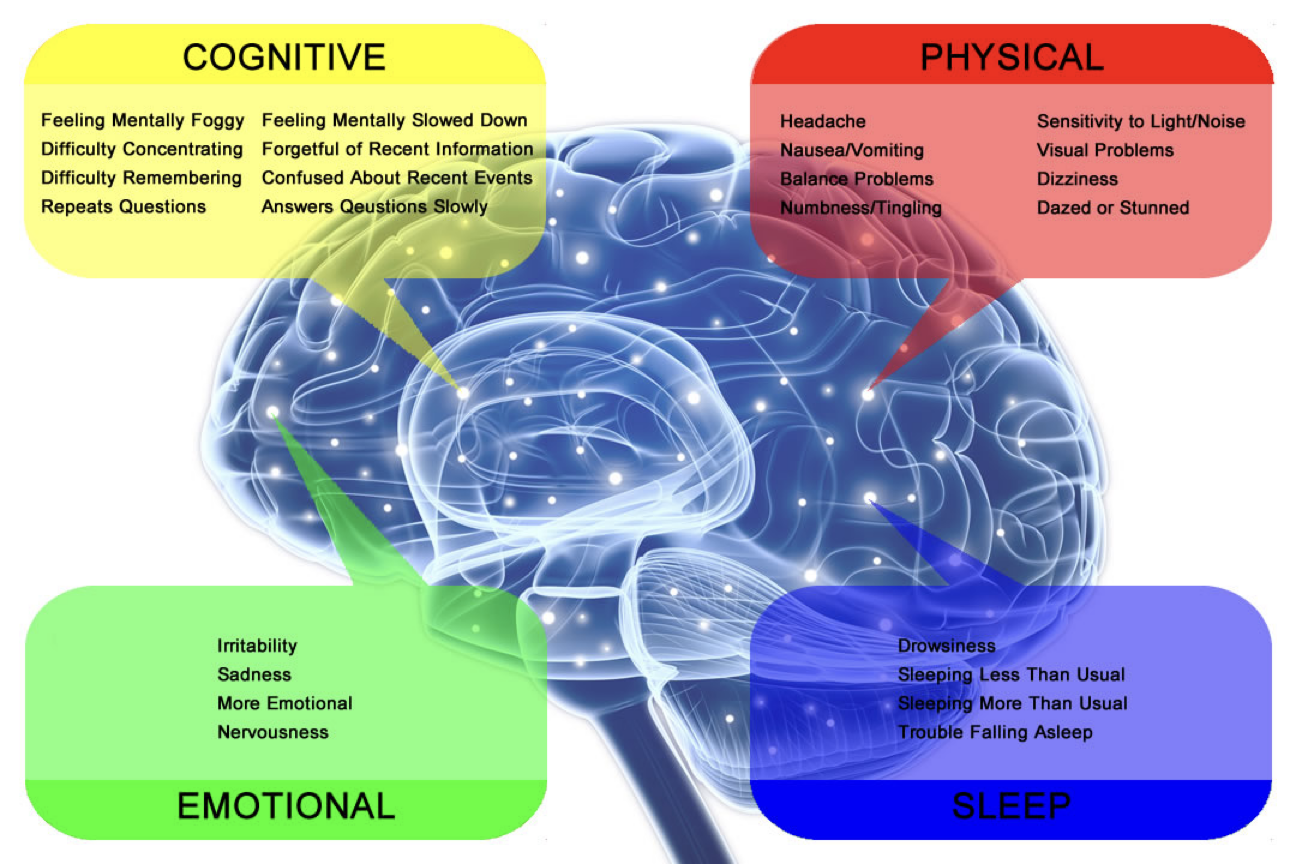
Dementia
Dementia is a deterioration of cognitive and language abilities resulting from progressive degeneration of the brain
Causes: heredity, vascular disease, viruses, unknown factors
Symptoms include: memory deficits, changes in personality, orientation (person, place, time, situation) problems, episodes of confusion
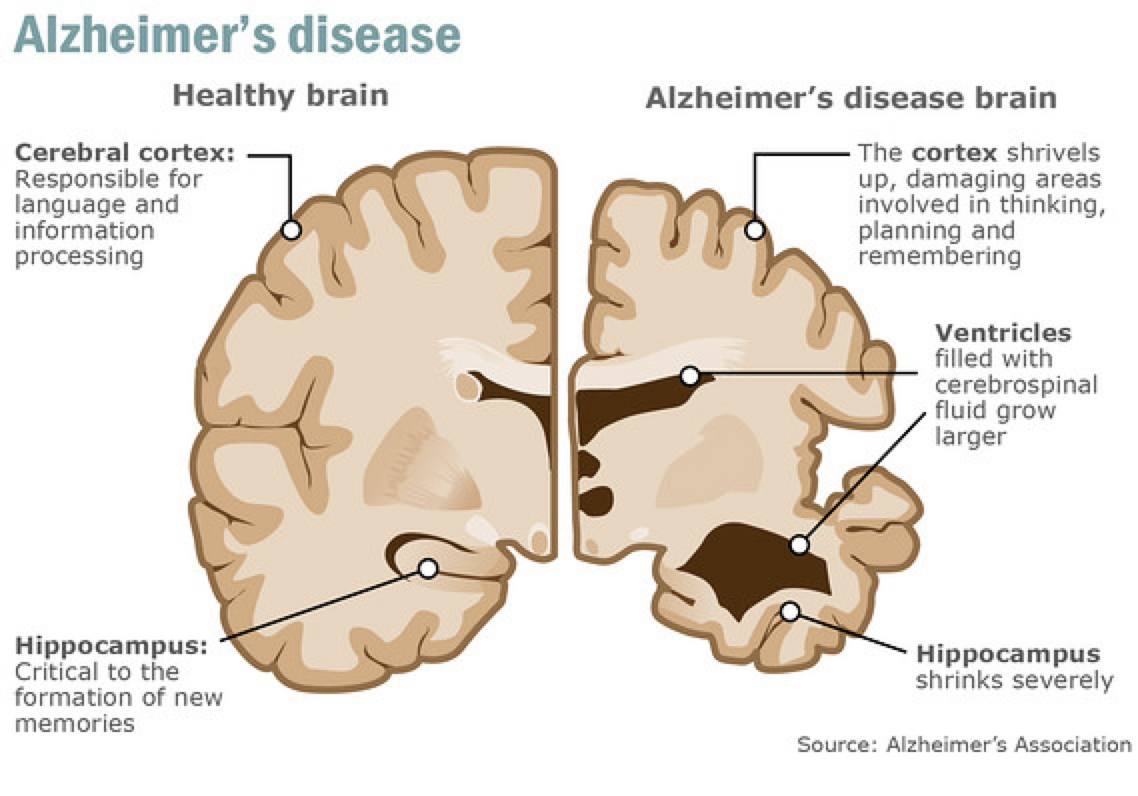
Early stages: word finding difficulties, reduced ability to comprehend new information, drift from the topic, grammar is intact
Middle stages: vocabulary is noticeably diminished, difficulty comprehending grammatically complex sentences, express ideas with little sensitivity to the communication partner, fail to correct errors
Late stages: severe anomia (no word finding), jargon, sentence fragments, meaningless content, dependent on assistance for most self-help skills
Arizona Battery for Communication Disorders in Dementia (ABCD)
Naming, oral description of objects
Normative data for normal older individuals and individuals with dementia
Intervention:
Changing communication environments, counseling caregivers, and group therapy
Reminiscence therapy
Spaced retrieval training
Goal:
Strengthen residual cognitive abilities
Reduce demand on impaired functions
ex. putting a picture of their home door over their hospital door
Increase life satisfaction for the patient
 Knowt
Knowt